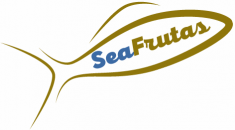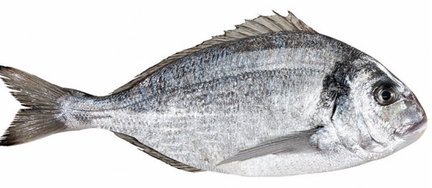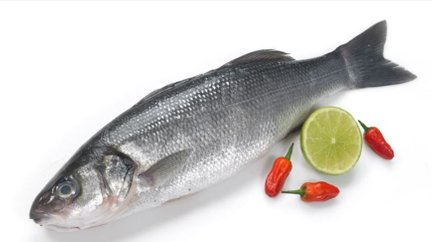
The SeaFrutas ® brand portfolio offers a diverse array of goods encompassing four major categories of sea treasures: crustaceans, cephalopods, fish, and mollusks.
Valordia is a leader in product diversity, enhancing the seafood arena in both retail and foodservice.
By remaining on top of the latest culinary trends, market insights, and quality processes, the SeaFrutas® brand aims to provide consistent consumer satisfaction and great customer service.


The SeaFrutas ® brand portfolio offers a diverse array of goods encompassing four major categories of sea treasures: crustaceans, cephalopods, fish, and mollusks.
Valordia is a leader in product diversity, enhancing the seafood arena in both retail and foodservice.
By remaining on top of the latest culinary trends, market insights, and quality processes, the SeaFrutas® brand aims to provide consistent consumer satisfaction and great customer service.

Fish
Fish are aquatic, craniate, gill-bearing animals that lack limbs with digits.
We source an enormous amount of fish from all around the world.
Cephalopods
Cephalopods have a symmetrical body, a conspicuous head, and a set of arms or tentacles.
We offer a variety of Cephalopod goods, including cuttlefish, squid, and octopus.
Crustaceans
Crustaceans form a large, diverse arthropod taxon that includes such animals as crabs, lobsters, crayfish, shrimp, krill, prawns, woodlice, barnacles, copepods, amphipods, and mantis shrimp.
Value Added Seafood
Breaded shrimp, breaded fish are part of SeaFrutas wonderful assortment of the value added ready-to-cook seafood products.
Molluscs
Mussel is the common name used for members of several families of bivalve molluscs, from saltwater and freshwater habitats. These groups have in common a shell whose outline is elongated and asymmetrical compared with other edible clams, which are often more or less rounded or oval.
Fish Products

Gilthead Seabream

European Seabass
Gilthead seabream
Traditionally, gilthead seabream were cultured extensively in coastal lagoons and saltwater ponds, until intensive rearing systems were developed during the 1980s. The Italian ‘vallicoltura’ or the Egyptian ‘hosha’ are extensive fish rearing systems that act like natural fish traps, taking advantage of the natural trophic migration of juveniles from the sea into coastal lagoons. Gilthead seabream are very suitable species for extensive aquaculture in the Mediterranean, due to their good market price, high survival rate and feeding habits.Body oval, rather deep and compressed. Head profile regularly curved. Eye small. Mouth low, very slightly oblique. Lips thick. Four to 6 canine-like teeth anteriorly in each jaw, followed posteriorly by blunter teeth which become progresively molar-like and are arranged in 2 to 4 rows (teeth in the 2 outer rows stronger). Total gill rakers on first arch short, 11 to 13, 7 or 8 lower and 5 (rarely 4) to 6 upper. Dorsal fin with 11 spines and 13 to 14 soft rays. Anal with 3 spines and 11 or 12 soft rays. Cheeks scaly, preopercle scaleless. Scales along lateral line 73 to 85. Colour silvery grey; a large black blotch at origien of lateral line extending on upper margin of opercle where it is edged below by a reddish area; a golden frontal band between eyes edged by two dark areas; dark longitudinal lines often present on sides of body; a dark band on dorsal fin; fork and tips of caudal fin edged with black.The gilt-head bream is generally considered the best-tasting of the breams. It is the single species of the genus Sparus which has given the whole family of Sparidae its name. Its specific name, aurata, derives from the gold bar marking between its eyes.
Sizes : 200 – 300 gr / 300 – 400 gr / 400 – 600 gr / 600- 800 gr / 800 – 1000 grFresh / Chilled Shelf Life : 14 DaysStorage Temperature : 0 – 4 CPacking Type : Strophor
Gilthead seabass
Seabass were historically cultured in coastal lagoons and tidal reservoirs before the race to develop the mass-production of juveniles started in the late 1960s. Fish culture was initially associated with salt production in coastal evaporation pans and marshes. The salt was harvested during the high evaporation season of summer and autumn, and fish were cultured during winter and spring. The supply for this culture came from trapping schools of fish that lived in these estuarine areas. Dicentrarchus labrax is a primarily ocean-going fish that sometimes enters brackish and fresh waters. It is also known as the sea dace. Highly regarded as a table fish, it is often marketed as Mediterranean seabass, loup de mer, robalo,lubina, spigola, branzino, or bronzinoThe European seabass (Dicentrarchus labrax) was the first marine non-salmonid species to be commercially cultured in Europe and at present is the most important commercial fish widely cultured in Mediterranean areas. The most important farming countries are Turkey, Greece, Italy, Spain, Croatia, and Egypt Greece, Turkey, Italy, Spain, Croatia and Egypt are the biggest producers.Body rather elongate. Opercle with 2 flat spines; preopercle with large, forward-directed spines on its lower margin. Mouth terminal, moderately protractile. Vomerine teeth in a crescentic band, without a backward extension on midline of roof of mouth. Two separate dorsal fins; the first with 8 to 10 spines; the second with 1 spine and 12 or 13 soft rays. Anal fin with 3 spines and 10 to 12 soft rays. Scales small; lateral line complete with 62 to 74 (mode 70), but not extending onto caudal fin. Caudal fin moderately forked. Colour silvery grey to bluish on the back, silvery on the sides, belly sometimes tinged with yellow. Young with some dark spots on upper part of body but adults never spotted. A diffuse spot on the edge of opercle.
Sizes : 200 – 300 gr / 300 – 400 gr / 400 – 600 gr / 600- 800 gr / 800 – 1000 grFresh / Chilled Shelf Life : 14 DaysStorage Temperature : 0 – 4 CPacking Type : Strophor






